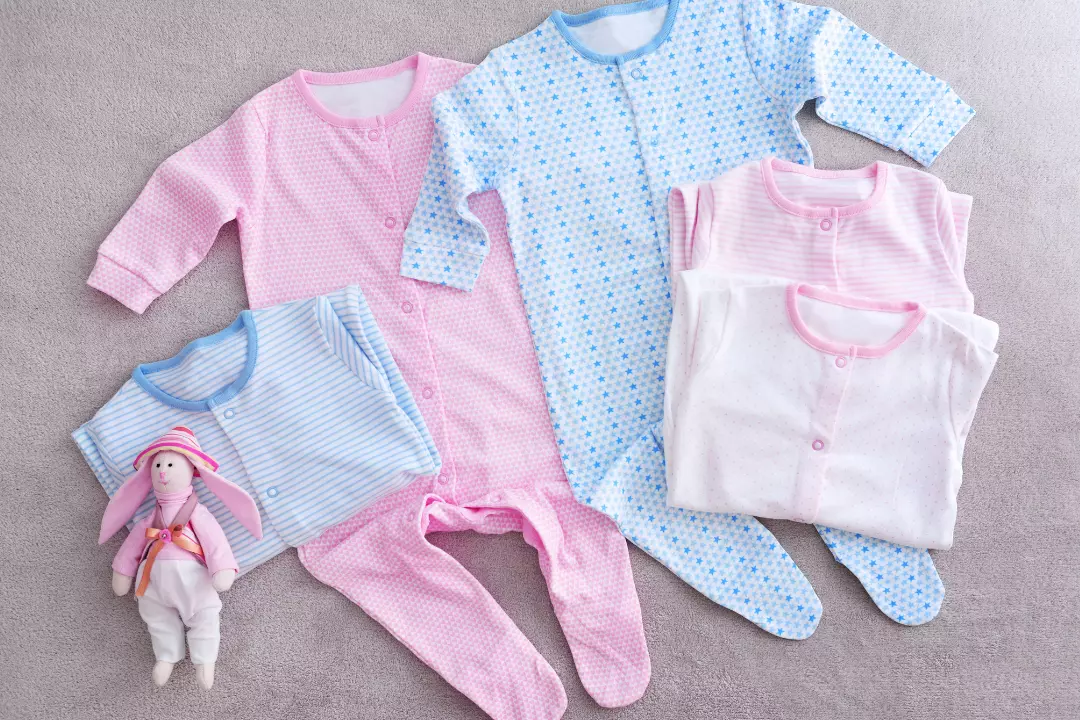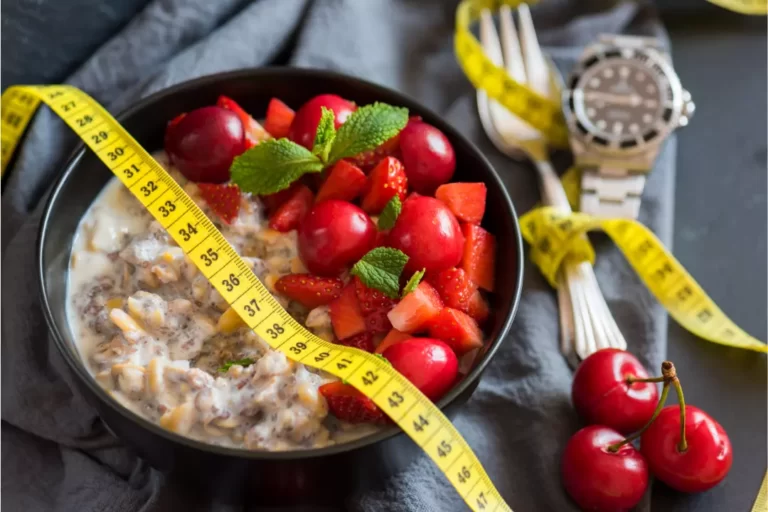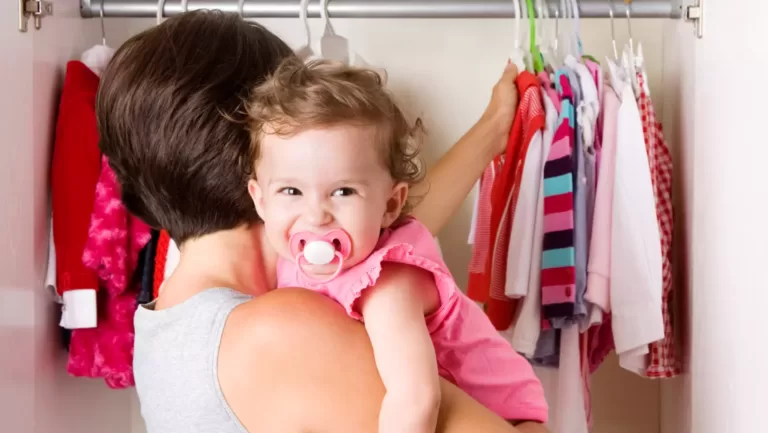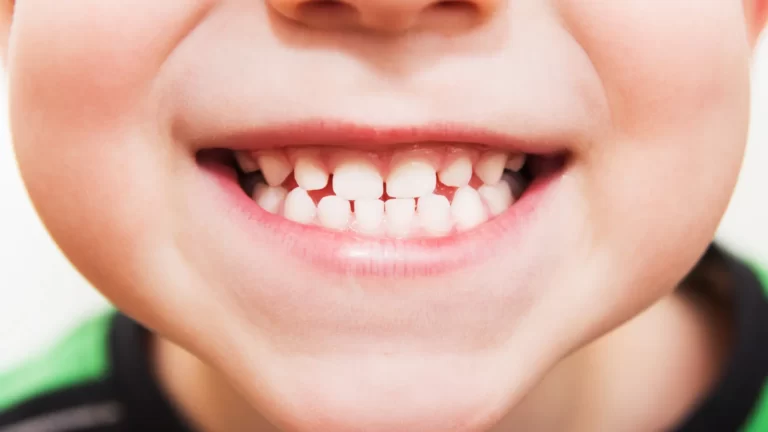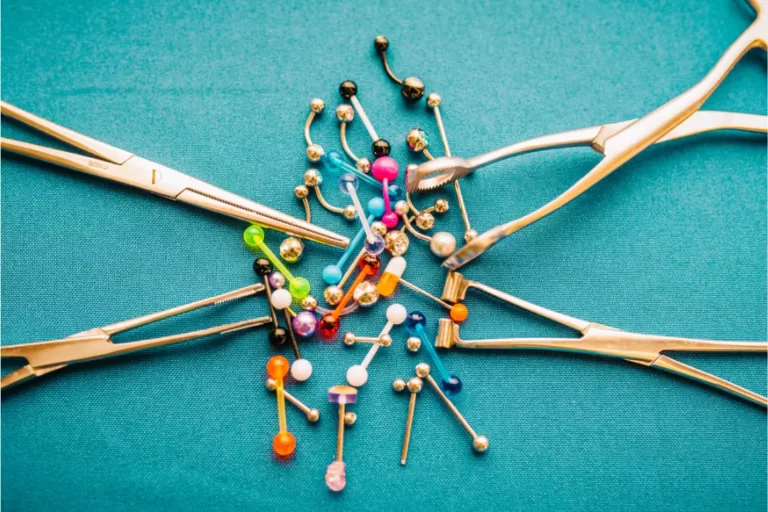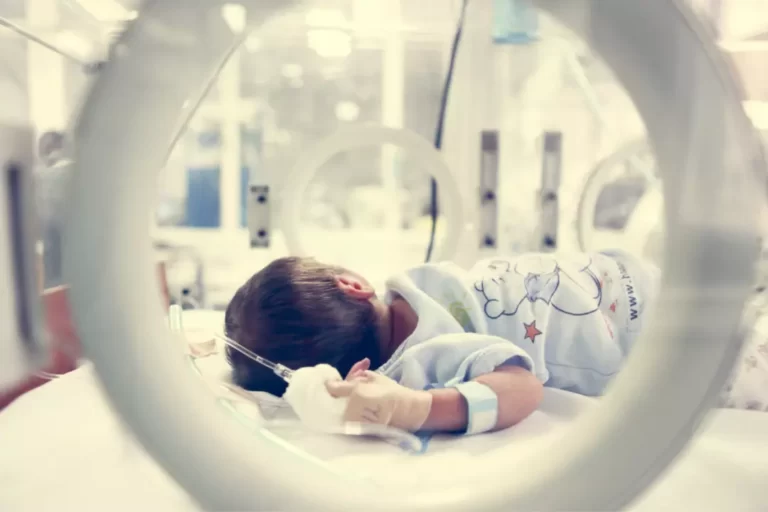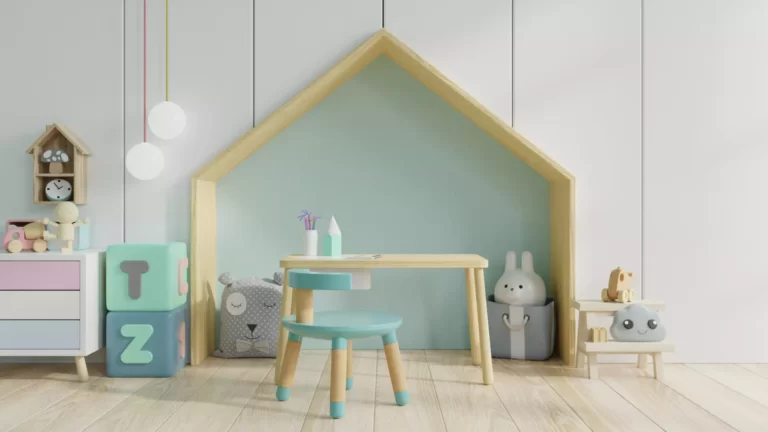Baby Clothes Checklist First Year
Originally posted on 25/06/2023 @ 15:26
So you are both excited and nervous about being parents for the first time in life? Baby’s arrival means a whole lot of prepping and gearing up with the must-haves. As parents, we always want to give our babies the best of everything, be it their clothes, hygiene, or even skincare.
Shopping for your baby can be fun, but at times it is just so stressful and confusing. There’s so much to be figured out! So we are here to guide you with the ultimate newborn baby essentials checklist for your baby so that you don’t miss out on anything.
Baby clothes checklist first year
Let’s face it! Most of the baby outfit shopping you do is random cute pieces that babies anyway will not wear. We all know how tempting those cute gowns and adorable tuxes are. But why not instead go for some wise, budget shopping and buy baby clothes that your little one needs and is worth your money. Let us go through the month by month checklist:
Baby clothes 0-3 months
All your baby does during these months is sleep and eat. You have to stick to very light and comfortable, basic clothing. A few onesies, soft pants, 6-7 sleepers, and a pair of socks to keep your baby warm are more than enough. During these months, you need clothes for your baby that come off very easily without any struggle.
So onesies are just perfect for your newborn. You can pull it off so fuss-free from the baby’s shoulder area. Isn’t that super convenient? While you are shopping for pants, you can go for nursing pajamas. They are comfy and are designed for easy breastfeeding. 0-3 months baby nap so frequently, and sleepers are just great for both their fun-time and sleep-time.
Baby clothes 3-6 months
This is the time your baby starts moving around. You will probably now start taking your baby outside the home. So you have to add in maybe a pair of shorts or a cute skirt to your list. All other basic outfits remain the same. You can also go for convenient bodysuits in baby clothes sizes that snap under the diaper and pull over the head.
Baby clothes 6-9 months
Your baby has probably started walking by now. A walk to the park will now often be a part of the routine. You can buy two to three pairs of jeans for your baby so that the knees are well-covered when they crawl. Your baby will also need a pair of new shoes now.
Don’t go for too tight or the too fancy and uncomfortable ones. A simple pair of soft and fluffy shoes will do. If you want your baby to go a little OTT by now, sweatshirts or fleece jumpsuits and footed pajamas are perfect for winter baby shopping.
Baby clothes 9-12 months
So now it’s time to update your baby’s wardrobe completely. You can now think of buying proper outfits for your baby, maybe a top and a pair of stretchy pants or a few fancy outfits for special occasions, cute hair accessories, and leg warmers. It would be best to buy extra pairs since you have to be ready for all the spills and messes. Add in 4-8 one-piece pajamas and adorable nightgowns to the shopping list, and you are done.
Size Chart (for orientation)
|
SIZE |
WEIGHT |
HEIGHT |
|
Preemie |
up to 6 lbs / up to 2.7 kg |
up to 17 in. / up to 43 cm |
|
Newborn |
6-9 lbs / 2.7-4.1 kg |
up to 21.5 in. / up to 55 cm |
|
0 to 3 months |
9-12.5 lbs / 4.1 – 5.7 kg |
21.5 – 24 in. / 55 – 61 cm |
|
3 to 6 months |
12.5 – 17 lbs / 5.7 – 7.7 kg |
24 – 26.5 in. / 61 – 67 cm |
|
6 to 9 months |
17 – 21 lbs / 7.7 – 9.5 kg |
up to 28.5 in. / up to 72 cm |
|
0 to 9 months |
up to 21 lbs / up to 9.5 kg |
up to 28.5 in. / up to 72 cm |
|
12 months |
21 to 25 lbs / 9.5 -11.3 kg |
28.5 to 30.5 in. / 72 to 78 cm |
|
18 months |
25- 28 lbs / 11.3 – 12.7 kg |
30.5 to 32.5 in. / 78 – 83 cm |
|
24 months |
28 – 30 lbs / 12.7 – 13.6 kg |
32.5 to 34 in. / 83 – 86 cm |
When Should You Start Buying Stuff For Your Baby?
Once you have stepped into your third trimester, it’s time to start curating your baby’s essential list. Starting from wardrobe and feeding essentials to diapering and bath essentials, you need to plan everything. Do not blindly start putting in items on the list! Think about the basic things your baby might need on a day-to-day basis.
Start listing down every single thing. It can be outfits, cradles, diapers, baby wipes, shampoo, body wash, skincare essentials, feeding bottle, stroller, etc. Once you have created your checklist, strike out the things you think your baby can do without.
How to organize baby clothes without a closet?
Do you know that you can organize your baby’s clothes so well even without a wardrobe? Babies usually need an entire section in the closet to themselves. Over time they accumulate a lot of stuff like outfits, little keepsakes, or even blankets. All you need to be is a little more creative and fun! Check out these creative storage solutions.
1.Storage baskets
A big drawer can fit in almost all your baby’s clothes. But if you want to keep the different clothing pieces separate, you have to use storage baskets. They come in so many different shapes and sizes. You can pick the ones according to your need. Do you want your baby’s outfits to be arranged in neat stacks so that finding that pajama at night or the sleepers isn’t a time-consuming task? Organize each type of outfit in each basket.
2.Cube storage
Cubicle organizers are not just convenient and smart storage solutions but also super-stylish. You can either stack them close or even hang them, which saves a lot of storage space. They are available in so many beautiful designs and shades that you can’t stop obsessing over them.
3.Dresser
If you are very particular about keeping all your baby’s outfits perfectly, a dresser is the smartest storage idea. You will be able to use so many organizer tools like dividers, tags, and even drawers. You can organize not just your baby’s outfits but also the diapers, skincare, and even toys in it.
Organic v/s Natural v/s Clean Skin Care for a baby
We are pretty sure that whenever you shop skincare products for your baby, the first thing you do is look for these labels. But did you ever bother to check the ingredients in your baby’s body lotion or diaper rash cream? There are so many baby skin care products in the market, but you have to choose the best for your little one.
Organic skincare: The label “organic” in your baby’s skincare products means that the ingredients have been grown organically without chemicals. However, the products are usually just 95% organic, and you need to check if the rest of 5% of the ingredients are suitable for your baby’s sensitive skin.
Natural skincare: “Natural” baby skincare products mean the ingredients are not synthetic rather plant-based. But not every natural ingredient will suit your baby’s skin. You have to make sure that your baby is not allergic to any of the ingredients in the product.
Clean skincare: More and more parents are shifting towards this for their babies. Do you know why? Because no matter what is the source of the ingredients, these skincare products will always be 100% safe and non-toxic on your baby’s delicate skin.
Baby’s skincare essentials:
- Hydrating cream
- Cleansing gel
- Cloth-safe diaper creams
- Micellar water
- Wipes
- Body lotion
Clothes Diapers v/s Disposables: How and what to choose?
Almost every other parent is confused when it comes to this. They can’t usually decide whether to go for the convenience of disposable diapers or the comfort of cloth diapers. Maybe a pro and con list would help.
Cloth diapers:
Cloth diapers are so much more affordable and environment-friendly than disposable ones. They also feel great on your baby’s skin due to their ultra-softness. Since these diapers have comparatively less absorption capacity, the chances of rashes are automatically less.
Cloth diapers are also free from artificial dyes, gels, and chemicals which make them more skin-friendly. Your baby would love these diapers when the weather is a bit too hot and sticky. But you need to change these diapers very frequently throughout the day, and the chance of a mess is far greater.
Disposable diapers:
If you are a working parent who needs the baby to stay dry for long hours, disposable diapers should any day be your first choice. They are ultra-absorbent. It means only a few diapers change a day is enough.
There are several eco-friendly brands of disposable diapers coming up these days. They are not so harsh on your baby’s sensitive skin and cause lesser skin irritation. But usually, the drying gels on these diapers can cause diaper rashes.
So what is a better choice for your baby-disposable ones or the cloth ones? Honestly, both have their pros and cons. On days you are super busy with your work, you can go for the disposable ones. But on days you feel like you can spend more time with your baby, go for cloth diapers. However, in either case, maintain good hygiene standards and use diaper rash creams.
Essentials for your newborn
Apart from baby outfits that we have discussed earlier, there are so many must-haves that you need to include in your baby shopping checklist apart from the basics. Some of them are:
1.Diaper pail: If you don’t want your baby’s room to always smell of urine and potty, a diaper pail is a must.
2.Infant car seat: A safety car seat for your little one is a great idea. Make sure it meets all the safety standards and guidelines.
3.Crib and crib mattress: Even if you don’t plan to shift your baby to a crib right away, sooner or later, you need to. Get safe cribs with comfortable crib bumpers to protect your infant from injuries.
4.Nursing or feeding pillow: You don’t want to strain your baby’s neck and shoulders while feeding them. Nursing pillows can so well support your baby’s position while feeding.
5.Breast pump: If you are a busy working mom who doesn’t get enough time to breastfeed a child, you can get this product. It will help maintain a continuous supply of milk to your child.
6.Bottles and insulated bottle carrier: Buy a suitable feeding bottle according to your baby’s age an insulated carrier to keep the milk warm for longer periods.
7.Baby spoons and Sippy cups: If your infant kid has now grown a little older and feeds on solid food, include these in your shopping checklist. You can feed your baby using these spoons and cups for fewer spills and messes.
8.Baby soap and shampoo: Go for fragrance-free products with “no tears formula” for bath time. Make sure they are safe for your baby’s skin and eyes. It would help if you also bought a washcloth.
What should you not buy for a baby?
Now that we have already guided you regarding what to include in your baby’s shopping list, we should also tell you about the ones you should strike out at once. You will find so many of these ridiculous and useless baby products in the market that you should never even think of buying. Some of them are:
1.Baby robe: Does your baby need a robe after bathing? It is just another fancy and useless stuff.
2.Baby hairbrush: Trust us; your baby does not even have enough hair to run a hairbrush on it. Even if you feel the need to, use regular hairbrushes. But why do you even want to brush those micro hairs?
3.Wipes warmer: The last thing your baby needs is a warm feeling on the butt. Cold wipes are just as good and do the work.
4.Baby cologne: If capitalism had a face, it should be this product. Seriously, what is the point of putting cologne on your baby? Who are the parents who are fooled into buying this? Babies naturally smell so good!
5.Baby tub: This one is nothing but just a plain waste of money and space. You can bathe your baby in the regular bathtub with shallow water and a washcloth.
Conclusion
Shopping for a baby is never going to be easy! The shopping malls are flooded with baby products, and if you don’t have an essential checklist with you, you will end up overspending. Don’t drool over every other cute baby item you see! Skip things your baby can do without, and both your storage space and bank account will be thankful to you.

